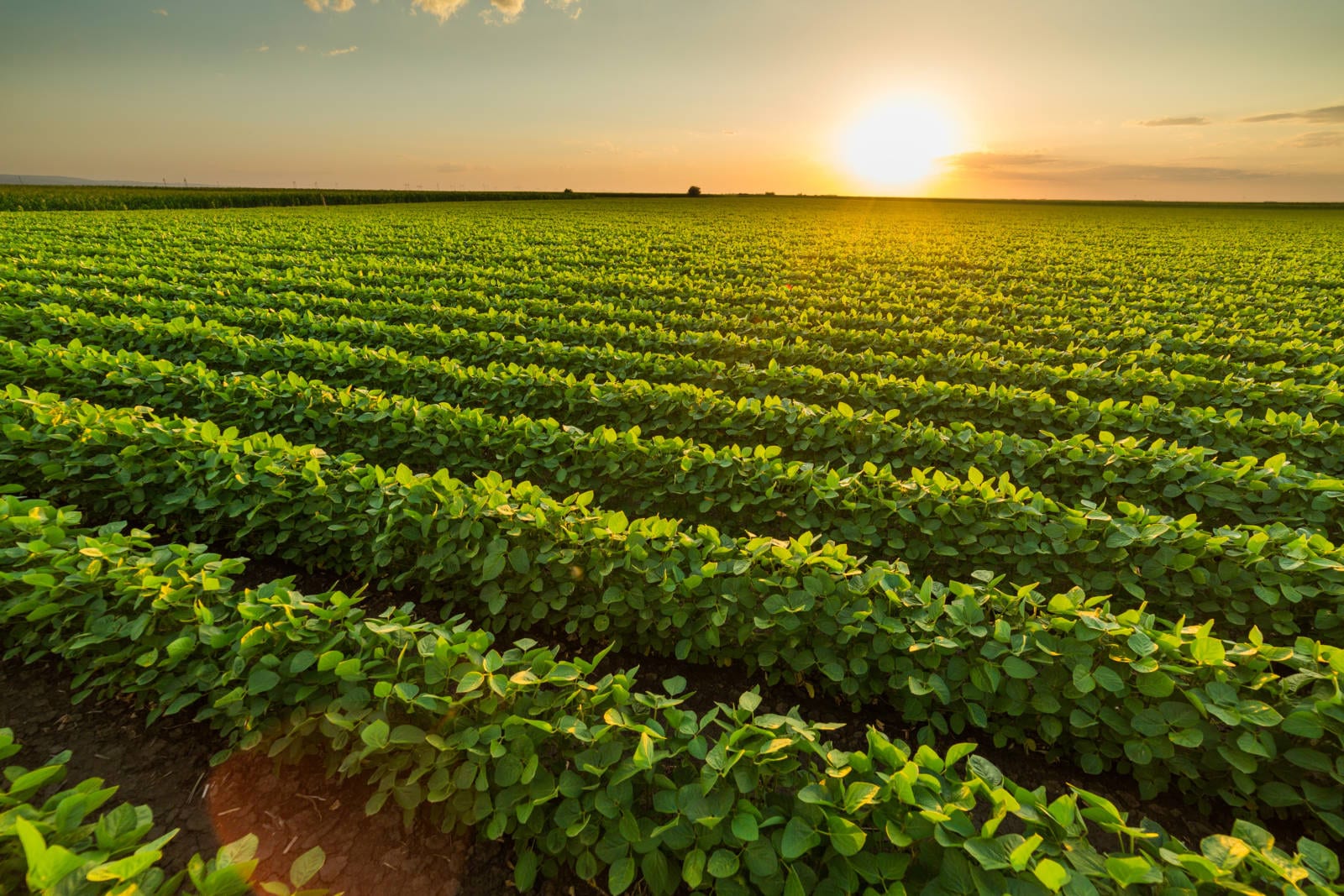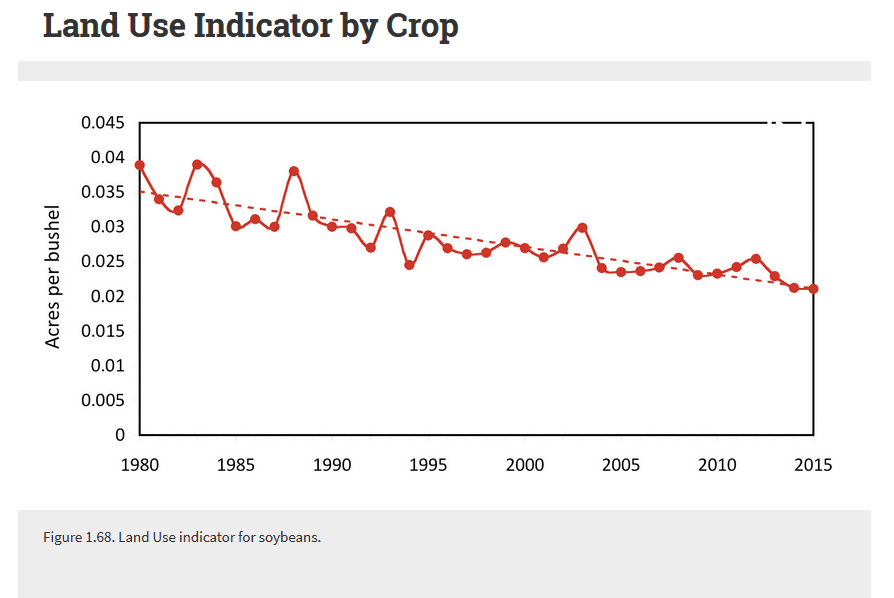The fields covering rural America may appear monotonous from the air or highway. But farmers have a much different perspective.
“Land is the most permanent resource for my farm,” says Doug Winter, a soybean farmer from Mill Shoals, Illinois. “It’s the most important asset for me to maintain, improve and use efficiently.”
And like U.S. soybean farmers overall, Winter uses his land more effectively than before.
“Demand for crops has grown, and we now produce a lot more food supply on the same or a smaller footprint of land than we did 20 or 40 years ago,” he says. “It’s the most environmentally responsible thing we do.”
In fact, it takes 21 percent less land to produce one bushel of soybeans that it did in 2000, according to USDA data. And the industry has committed to the goal of reducing land use impact another 10 percent by 2025.
One element to meet that goal is soil health, which encompasses many factors that contribute to the ability of soil to sustain plant growth. In the winter 2018 soy checkoff producer survey, 32 percent of farmers said improving soil health is the most important thing U.S. soybean farmers can do to maintain and increase the sustainability of soybeans.
“Improving soil health, the environment under the surface filled with microbes, earthworms, organic matter and more, keeps my fields and crops productive and efficient,” Winter explains.
Winter uses several management practices and technology to improve soil health and make the best use of his land.
- With crop rotation, Winter plants a different crop in a field each year. He alternates between soybeans and corn because each crop provides different benefits to the soil.
- He chooses no-till or conservation tillage based on soil type and other factors. This leaves crop residue on the ground, which reduces disturbance to the environment under the surface.
- Cover crops add organic matter, improve soil texture and reduce erosion because roots are always in the soil. Winter started planting cover crops the past few years.
- He plants genetically engineered (GE) seeds that require fewer resources and make it easier to use conservation tillage.
- Precision technology, like GPS and variable rate application, improves Winter’s efficiency throughout the season. He can manage the rates and placements of crop resources precisely, so he doesn’t waste anything. And autosteer tractors have reduced his fuel use 7 to 8 percent.
- Layering data from yield maps and soil tests allows him to focus on areas of the field that need improvement.
- About 9 percent of Winter’s ground is not cultivated, allowing for wildlife habitats. Small animals like birds, mice and snakes nest in residue and add organic matter to the soil.
“I’ve seen improvements in my soils, especially in drainage,” Winter says. “My fields can absorb heavy rains better. Healthier soil holds nutrients better, so they stay where the crop can use them. Healthier soil also filters high quality water back to the aquafer.”
Winter’s ground includes a variety of terrain, including steep hills, wooded banks and grass waterways. Responsible land management extends to this ground that can’t be farmed but offers other benefits. Small animals and birds make their homes in grassy areas and ditches, while wooded areas provide places for coyotes, deer and other larger animals.
“We intentionally avoid mowing our conservation reserve program ground, waterways and ditches between April 1 and August 1 because that’s when wildlife is most active,” he says.
He is among the 60 percent of farmers that have some land devoted to wildlife habitat preservation, which includes timbered areas and grasslands, according to a January 2018 Field to Market sustainability survey. It also reports that about 47 percent of farmers maintain wetlands on their land.
“We have to cultivate all factors on our land, from the soil in our fields to other types of ground,” Winter says. “It’s our responsibility to steward the land. That’s been drilled into me from my father and my grandfather. And I am motivated to continue to improve as my kids express their desire to maintain ownership of our ground.”
Interested in learning more about land stewardship and soy sustainability? Winter welcomes questions at fourdwntr@hotmail.com.

